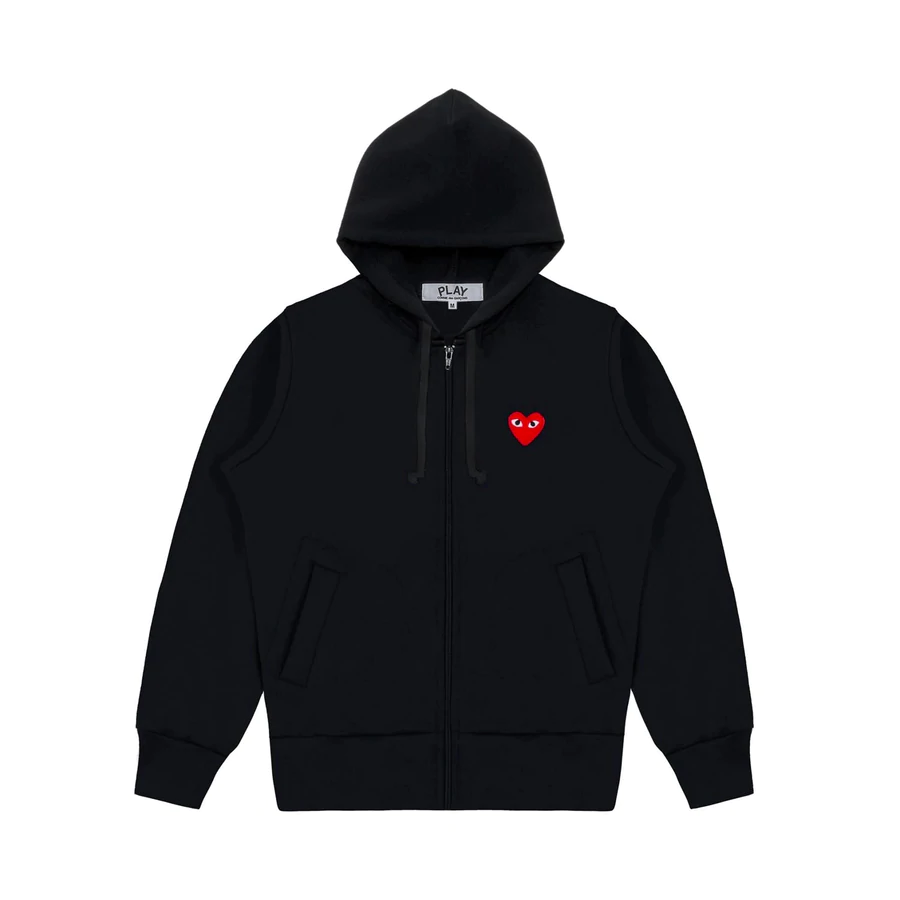In the ever-evolving world of fashion, few names command as much intrigue and admiration as Comme des Garçons. Founded by visionary designer Rei Kawakubo in 1969, the Japanese label has transcended the conventions of style, design, and identity. What started as a rebellion against traditional fashion norms has become a cultural force influencing luxury fashion, art, and the sneaker world alike.
More than just a brand, Comme des Garçons represents a mindset — one that challenges conformity and celebrates imperfection, asymmetry, and deconstruction. Today, it stands as one of the most influential names in both high fashion and streetwear, resonating with artists, collectors, and sneakerheads across the globe.
The Origins of Comme des Garçons
Rei Kawakubo founded Comme des Garçons in Tokyo with a clear intent: to create clothes that questioned the very idea of beauty. The name, which translates to “like boys” in French, captures the label’s gender-defying spirit. Kawakubo’s early collections were a stark contrast to the colorful, feminine trends of the 1970s, focusing instead on black, raw textures, and unusual silhouettes.
Her philosophy was simple but radical — fashion should provoke thought, not just admiration. This avant-garde perspective was initially polarizing, yet it paved the way for a new era of Japanese design that would later captivate the Paris runways.
The 1981 Paris Debut: A Defining Moment
Comme des Garçons made its international debut in Paris in 1981, introducing the world to what critics dubbed the “Hiroshima chic” aesthetic — distressed fabrics, asymmetry, and monochrome palettes. While some found it shocking, others recognized it as a turning point in fashion history.
Kawakubo’s designs were not merely garments; they were philosophical statements about individuality and imperfection. This collection redefined what luxury meant — not polished perfection, but authenticity and emotion.
Rei Kawakubo: The Visionary Behind the Movement
Rei Kawakubo’s genius lies in her refusal to conform. She famously stated that she designs “for people who are not afraid to stand out.” Her approach blends art, architecture, and abstraction, often ignoring conventional rules of tailoring.
Unlike many designers, Kawakubo operates largely outside traditional fashion structures. She rarely grants interviews and prefers her work to speak for itself. This mystery only deepens her influence, making Comme des Garçons a brand for thinkers and nonconformists.
Her contribution to the industry extends beyond her own label. Kawakubo nurtured other designers through Dover Street Market and various Comme des Garçons sub-labels, such as CDG Hoodie Homme, Play, and Black Comme des Garçons, fostering a community that continues to innovate.
The Birth of Comme des Garçons Play: Minimalism Meets Pop Culture
In 2002, CDG Shirt introduced a sub-line that would achieve global recognition — Comme des Garçons Play. Known for its iconic heart logo designed by Polish artist Filip Pagowski, the line merged the brand’s avant-garde DNA with accessible, casual wear.
Play became a bridge between high fashion and everyday street style. The simple T-shirts, hoodies, and sneakers featuring the quirky heart-with-eyes motif became instant cult favorites. Despite its minimalist design, the Play line retained the philosophical essence of Kawakubo’s main collections: rebellion through simplicity.
Comme des Garçons and Sneaker Culture
Perhaps one of the most fascinating evolutions of CDG Converse influence is its role in sneaker culture. The brand’s collaborations with major footwear names such as Nike, Converse, and Jordan Brand have become some of the most coveted releases in the sneaker world.
The Comme des Garçons x Converse Chuck Taylor is arguably the most iconic — blending streetwear sensibility with luxury minimalism. The playful heart logo on the classic silhouette symbolizes a seamless fusion of fashion and function.
In more recent years, Comme des Garçons has continued to push sneaker design boundaries, from the futuristic Nike Air Foamposite One collaboration to the Air Max 97 “Blackout” edition. Each release embodies Kawakubo’s ethos of experimentation and nonconformity.
The Power of Collaboration and Community
Collaboration has always been a cornerstone of CDG’ identity. Rei Kawakubo understands that innovation thrives in creative dialogue. Over the years, the label has partnered not only with sportswear giants but also with luxury houses, artists, and even fragrance creators.
These collaborations are not about commercial appeal — they are artistic experiments. Whether it’s a bold reinterpretation of the Nike Dunk Low or a fragrance partnership with Monocle, Comme des Garçons treats each collaboration as a new canvas for storytelling.
This open-minded approach has allowed the brand to resonate with younger audiences, ensuring its relevance across generations.
The Comme des Garçons Fragrance Universe
In 1994, Comme des Garçons expanded into the world of fragrance — and just like its fashion, it defied expectations. The debut scent, CDG Eau de Parfum, broke away from traditional perfume structures with notes of cloves, nutmeg, and industrial resins.
The brand’s fragrances often blur the line between pleasant and provocative, much like Kawakubo’s fashion. Collections such as Odeur 53 and Concrete challenge the very idea of what a scent should be. Instead of adhering to beauty, they evoke emotion and curiosity.
For fans of fashion and lifestyle, these perfumes have become symbols of individuality and artistic taste.
CDG Today: A Cultural Symbol
Today, Comme des Garçons stands at the crossroads of luxury, streetwear, and art. Its influence can be seen in everything from global fashion runways to sneaker drops and pop culture references.
The brand’s impact is not measured in trends but in ideology — the permission it gives people to express themselves freely. In an era where fashion often feels oversaturated, CDG continues to be a reminder that creativity cannot be confined.
Through initiatives like Dover Street Market, Kawakubo and her partner Adrian Joffe have created physical spaces where art, retail, and culture coexist harmoniously. These concept stores have become pilgrimage sites for fashion enthusiasts seeking inspiration beyond the mainstream.
The Enduring Influence of Rei Kawakubo
Rei Kawakubo’s legacy goes far beyond garments and collections. She has reshaped how we think about clothing as a form of expression and identity. Her designs encourage wearers to challenge social expectations and embrace imperfection as beauty.
Her work has been celebrated at major institutions, including the Metropolitan Museum of Art, which dedicated its 2017 exhibition “Rei Kawakubo/Comme des Garçons: Art of the In-Between” to her groundbreaking vision.
Even after more than five decades, CDG remains as relevant and rebellious as ever — proof that true creativity is timeless.
Final Thoughts
Comme des Garçons is not just a fashion label; it is a philosophy of freedom. From Rei Kawakubo’s radical designs to its iconic collaborations and fragrances, the brand continues to inspire a culture that values thought, individuality, and experimentation.
For fashion enthusiasts, sneaker collectors, and anyone who dares to be different, CDG is a reminder that style is not about perfection — it’s about perspective.



Leave a Reply